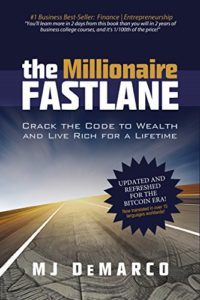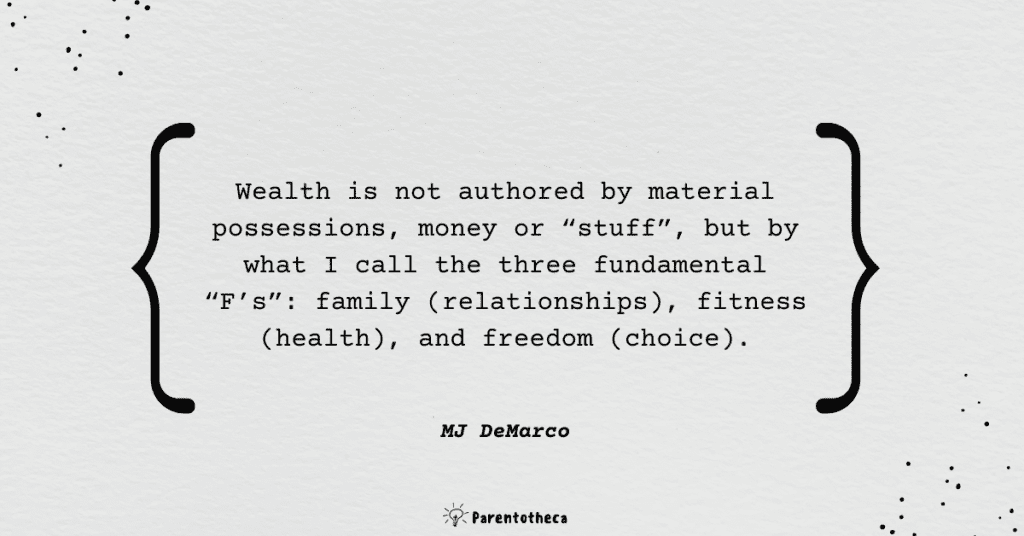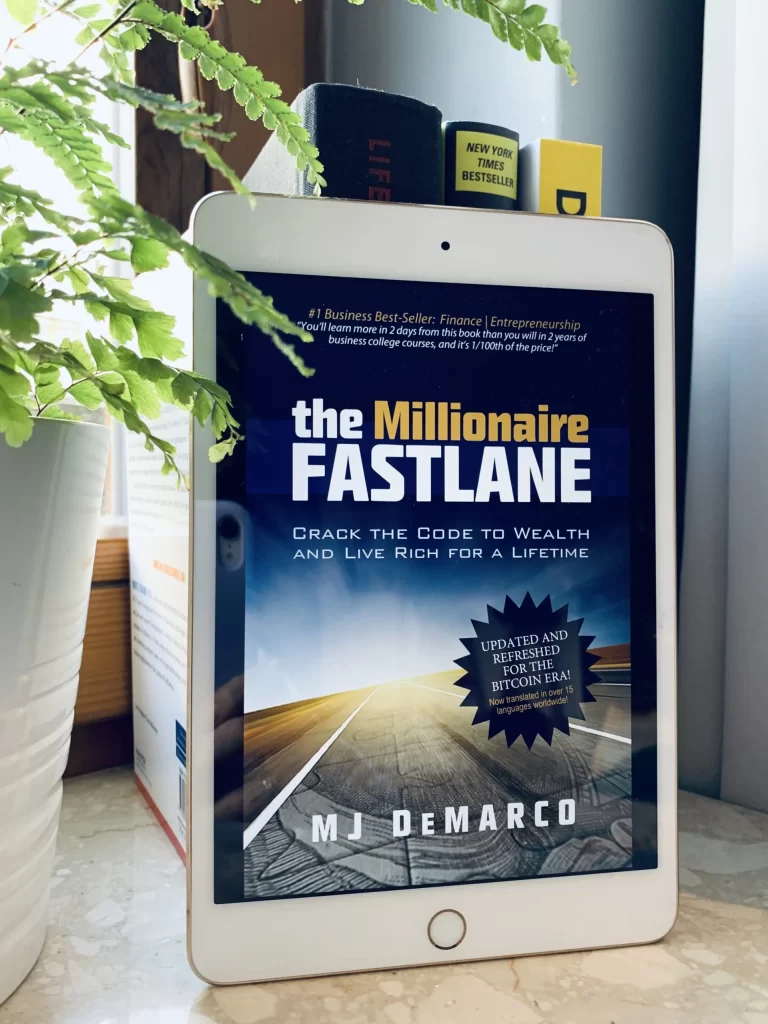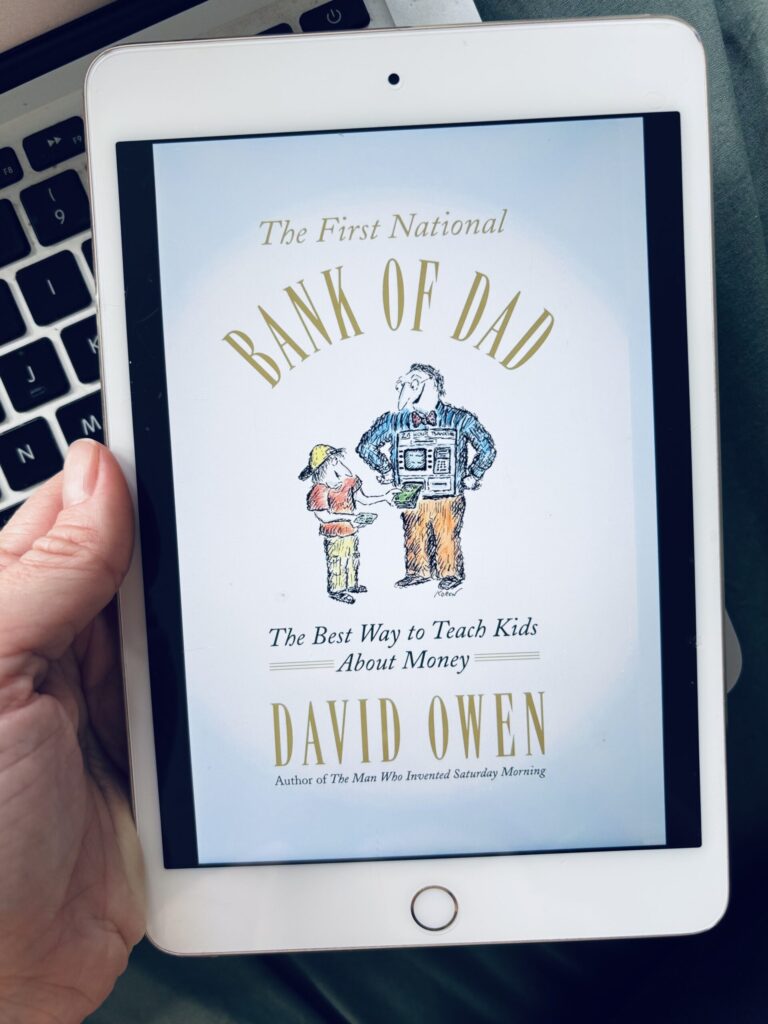 The Millionaire Fastlane – Book Summary
The Millionaire Fastlane – Book Summary
Crack the code to wealth and live rich for a lifetime
MJ DeMarco
Viperion Publishing; 2nd edition (4 Jan. 2011)
About the author
MJ DeMarco is a semi-retired entrepreneur, investor, advisor, and international best-selling author whose books have been translated in over 25 languages worldwide. He is the current founder of Viperion Publishing Corp., and also an admin/founder for The Fastlane Forum. DeMarco is a self-made multi-millionaire who powerfully challenges the conventional means of acquiring wealth.
About the book:
“The Millionaire Fastlane isn’t a static strategy that preaches “go buy real estate,” “think positively,” or “start a business,” but a complete psychological and mathematical formula that cracks the code to wealth and unlocks the gateway to the shortcut. The Fastlane is a progression of distinctions that gives probability to the unspeakable: Live richly today while young, and decades before standard norms of retirement. Yes, you can win a lifetime of freedom and prosperity, and it doesn’t matter if you’re 18 or 40. What “Get Rich Slow” does in 50 years, the Fastlane shortcut does in five.”
If you are not very much convinced by the conventional “Get Rich Slow” roadmap and want to figure out how to become wealthy while you are still relatively young, this is a great book to start with. In a nutshell, here DeMarco draws on his very own success story and many other great examples from the real life, and tells us how to take the shortcut to wealth – the Fastlane. And it’s all about starting your own business, growing your money trees and bringing value to people. No magic, no luck, just hard (and smart) work.
I personally felt really inspired by this book and wish I’d read it years ago (before we had kids – lol). Anyway, The Millionaire Fastlane is packed with big ideas that you can apply straight away. In these notes we’ll cover just few of my favourite, so definitely grab the books for more.
Let’s jump straight in.
Key Insights:
The Three Paths: Sidewalks, Slowlanes and Fastlanes
“What About Door #3? Sidewalk or Slowlane? Sacrifice today or tomorrow? Choosing a financial roadmap for your life is a conundrum that will battle at your psyche. You can walk the Sidewalk with no financial plan and convince yourself that the indulgences of today have no consequence for tomorrow, or drive the Slowlane and sacrifice your today for the risk and illusions of a secure tomorrow. But wait! There is another choice . . . an alternative, a hybrid financial roadmap that can create wealth fast and slash 40 years from wealth accumulation. “Fast” however is relative; if you’re 18 you can be filthy rich by 25. If you’re 30, you can be retired by 36. Broke at 48 and you can retire by 54. But is it likely? Risky? If you could play one of three raffles, which would you play?”
According to DeMarco, there are roughly three Roadmaps people tend to follow: the Sidewalk, the Slowlane and the Fastlane.
Quick overview:
The Sidewalk is not a roadmap to wealth. People following this track, spend more than they make and consider credit as part of their income. They’re more interested in looking rich than being rich, and they build their lifestyle around buying the latest and greatest stuff the day it comes out–all on credit, of course. Basically, they don’t have much control over their life and financial position. In fact, you can’t get wealthy as a sidewalker.
Whereas The Sidewalk is all about short gains (sacrificing tomorrow for today), The Slowlane is essentially all about sacrificing today for a hoped-for tomorrow. It’s about having a stable job, investing diligently in the stock market and hoping that, if everything goes well (and you don’t lose your job and the stock market doesn’t crush), in 30 – 40 years you might be able to retire rich. That’s what DeMarco calls “Wheelchair Wealth”. And funny enough, most financial gurus (e.g. the “two dads” guru :)) teaching us the Slowlane strategy didn’t actually use it to build their real wealth.
The Fastlane, is all about making smart choices and working hard to put business systems in place to create massive wealth to retire young:
“The Fastlane is about building a better system, a better contraption, a better product, or a better “something” that will leverage your work. In the Slowlane, you are the source of heavy lifting, while in the Fastlane, you construct a system that does it for you. On your wealth road trip, the Slowlane roadmap asks that you endure a long, tiresome walk to wealth. The toil of wealth is the process itself. In the Fastlane, wealth is driven in a business system you create – the toil is the creation and management of the system itself.”
Question for you – which road map are you following now?
P.S.: to us the Roadmaps resemble Tal Ben-Shahar’s happiness archetypes: The Hedonism Archetype (Sidewalkers), The Rat Race Archetype (Slowlaners), and Happiness Archetype (Fastlaners). Check out our notes on his great book Happier.
Get Rich Quick vs Get Rich Easy
Whereas The Fastlane helps you to Get Rich Quick (well, “quick” is about 10 years), we should not confuse it with the Get Rich Easy path.
Get Reach Easy is in most cases a scam (like “buy this course and get filthy reach in 10 days” or “do this one thing and get rich”) and always leads to lighter wallet.
To Get Rich Fast you need a significant investment of your time, energy and other recourses. It’s not an event, but a process.
Self-Made Millions Arise From Self-Made Luck
“To create luck, engage in processes so probabilities move from NOTHING, to SOMETHING. Luck is introduced when you play. If you don’t play, you can’t win. Unfortunately, Sidewalkers assign luck to events of mystical chance. They don’t see the manipulated probabilities imbued by process which makes the chance possible. If you want luck, dive into process, because process raises events from the ashes.”
To get lucky, you need to take action. It also reminds me of Darren Hardy’s Luck Formula from The Compound Effect:
“The (Complete) Formula for Getting Lucky: Preparation (personal growth) + Attitude (belief/mindset) + Opportunity (a good thing coming your way) + Action (doing something about it) = Luck”
Luck is in our hands.
Wealth Demands Responsibility, Followed by Accountability
“Immunization for victimitis occurs when you are both responsible for AND accountable to your actions and the action’s possible poor consequences. Own your mistakes, failures, and triumphs. Reflect on your choices. Are you in a situation because you put yourself there? Did you error in the process? Were you lazy? Most bad situations are consequences of bad choices. Own them and you own your life.”
We can succeed in life and in business only when we take responsibility for our choices and our actions. And if you own your mistakes and failures and approach them with the Growth Mindset, they don’t become “the badge of victimhood” – they become wisdom.
And one more thought from DeMarco – we have to be accountable to our choices to be successful:
“We’re being methodically brainwashed to believe that we deserve everything without obedience to process, or accountability. You deserve what your actions earned, or haven’t earned. Being responsible is one thing; being accountable is another. When you’re accountable to your choices, you alter your behavior in the future and take the driver’s seat of your life.”
Brilliant. Take the driver’s seat of your life. And get rid of the victim mindset 🙂
By the way, in The Compound Effect Darren Hardy shares exactly the same idea and recommends to get an “accountability buddy” so you could stay on track.
Become a Producer First And a Consumer Second: Offer Value to The World
“Reshape life’s focus on producing, not consuming.”
To get wealthy, you need to switch the Team Consumer to the Team Producer. Instead of buying products, sell them. Instead of taking a class, offer a class. Instead of borrowing money, lend it. And so on.
To switch the teams, you need to become an entrepreneur and innovator, a visionary and a creator. Basically, you need to create a business and offer value to the world.
You can start with looking at the products you use from the business perspective. E.g. next time you visit a food blog, don’t just pin a recipe, but notice how they make money (affiliate marketing, ads, digital products?); buying a course online – check out the marketing funnel and how their shopping cart is designed. That approach helps us to learn about real business strategies that are working in a real world right now.
That’s the mindset we want to install in our kids from early childhood: to be a creator, not a consumer. That’s something what they will not learn at school. Question for you – which skills do you need to teach your child to become a creator? Here is our short post with few hints.
Fastlane Wealth Equation
“If you can manipulate the variables inherent to your wealth equation, you can get wealthy. Those variables are:
Net Profit = Units Sold x Unit Profit
~and~
Asset Value = Net Profit x Industry Multiple”
That’s the mathematical formula to build wealth. The whole point is to have control over the variables. In the book DeMarco goes into greater detail, so definitely check it out if you are serious about starting your own business.
Grow Your Money Tree
“Money trees are business systems that survive on their own. They require periodic support and nurturing but survive on their own, creating a surrogate for your time-for-money trade.”
DeMarco says that money can grow on trees, but you have to plant these trees first. That means you need to build a business system so it will not depend on your time. Here are the examples of “business seedlings” to money trees:
- Rental systems (examples: renting commercial sites, renting a house/flat, license fees, etc)
- Computer/Software systems (software, applications)
- Content Systems (writing books, blogs, creating video blogs, online magazines)
- Distribution systems (creating online platforms/stores, network marketing companies, franchising/chaining)
- Human Resource System (e.g. consultancy, agency)
In fact, all of these things are assets. And as Robert Kiyosaki advises us Rich Dad, Poor Dad (check out our notes), we should start acquiring this kind of assets as early as possible in life. So we will still have plenty of time to reap the fruits of our money tree 🙂 That’s one of the key financial literacy lessons we want our kids to learn from childhood.
Law of Effection
“The Law of Effection states that the more lives you affect in an entity you control, in scale and/or magnitude, the richer you will become.”
DeMarco offers a more effective alternative to The Law of Attraction – The Law of Effection. In short, if you affect millions, you can make millions.
“Make a giant impact a few times or make a small impact millions of times.”
E.g. if an author sells millions of $10 books he’ll be a millionaire; or if a property developer sells 100 properties $300.000 each he’ll be a millionaire.
Love it. The next step is to figure out how to do it 🙂 But more on that later.
Never Stop Learning
“When you continually inject yourself with new education, new skills, and new competencies, new roads open and things run smoothly. The right education has incredible horsepower. New opportunities rarely follow an old education.”
Learners are earners. You should treat your mind as your greatest asset. And nowadays it’s so easy to learn a new skill at a relatively low cost (e.g. reading books, listening to podcasts, learning from YouTube videos or on other educational platforms like udemy.com or coursera.com)
And if we want our children to succeed in life we should help them develop curiosity and love for learning from early childhood (check out our notes on How to Think Like Leonardo Da Vinci and Mindset for more ideas).
Interest vs Commitment
“Mark Zuckerberg, founder of Facebook, didn’t build the most-used social networking site by being interested. He was committed. Thomas Edison didn’t invent the light bulb by interest; he was committed. Interest is quitting after the third failure; commitment is continuing after the hundredth.”
In a nutshell, to succeed you need grit. Get committed to your business.
Five Fastlane Commandments: Start a Business Based on Control, Entry, Need, Time and Scale
“A road meeting all five commandments can make you filthy reach fast. As violations occur, the road degrades in it’s wealthy potential, and with it, your ability to get near Effection also degrades. While it’s possible to violate one or more commandments and still create wealth quickly, you should aim for a road that satisfies all five commandments.”
Five commandments (or the CENTS Framework) are:
- The Commandment of Control: you must control your business, product and pricing (basically, you need to be in a driver’s seat).
- The commandment of Entry: start a business that has high barrier to entry (that means that it takes multiple complicated steps to launch).
- The Commandment of Need: businesses that solve needs and provide value win (your potential customers care about what your business can do for them).
- The commandment of Time: to become free, your business and your income should detach from your time.
- The Commandment of Scale: start a business that has a potential to grow bid (think big)
Two necessary conditions for “do what you love”
“Money isn’t attracted to selfish people. It is attracted to businesses that solve problems. It’s attracted to people who fill needs and add value. Solve needs massively and money massively attracts. The amount of money in your life is merely a reflection to the amount of value you have given to others.”
And here are two necessary conditions for “do what you love” to work: (1) your love must solve a need and (2) you must be exceptional at it.
In fact, that’s what the Japanese concept of Ikigai is all about: What do you love? What are you good at? What does the world need? What can you be paid for?
To succeed you also need not love, but passion. Know your WHY to stay motivated and beat procrastination on the way to success.
Key Takeaways:
- Write down 3 first steps you can do to grow your money tree, put the time frame and execute it.
- Reflect on your choices in life. How can you learn from bad choices and consciously make better ones?
- Start looking at your consumer experiences from the creator perspective. What can you learn from them? How can you apply this knowledge to build your very own business system?
Quotes from the book:









